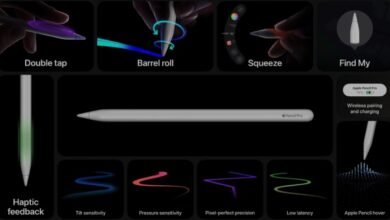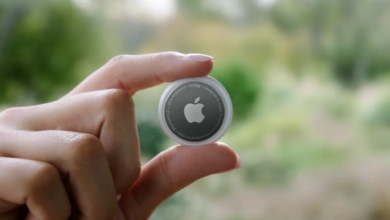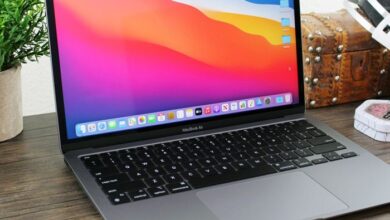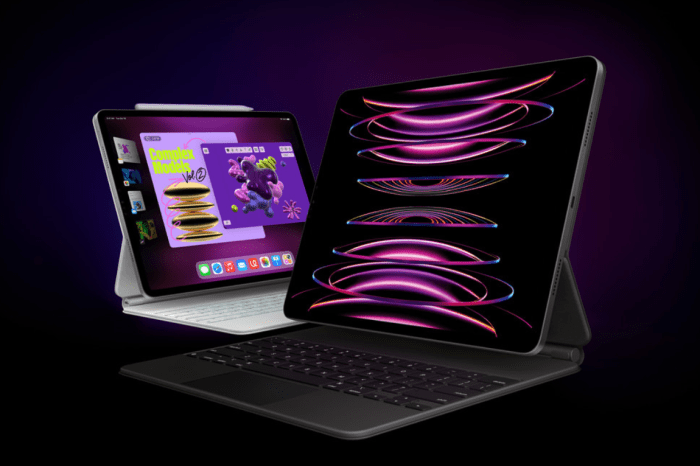
OLED iPad Pro M4 vs iPad Pro M2: Which One Should You Choose?
OLED iPad Pro M4 vs iPad Pro M2: The latest iPad Pro models from Apple are packed with power and innovation, but which one is right for you? Both devices boast stunning displays, powerful processors, and a sleek design, but they also have key differences that might sway your decision.
We’ll dive into the details of each model, comparing their display technology, performance, camera capabilities, software, and more, to help you determine the best fit for your needs.
Choosing between the iPad Pro M4 and iPad Pro M2 comes down to your priorities. If you prioritize the absolute best display technology and don’t mind the higher price tag, the M4 is a compelling choice. But if you’re looking for a more budget-friendly option that still delivers excellent performance, the M2 might be the better fit.
The OLED iPad Pro M4 vs. iPad Pro M2: A Head-to-Head Comparison
The iPad Pro has consistently been Apple’s flagship tablet, and the recent release of the M4 and M2 models further solidifies its position in the premium tablet market. Both models offer powerful performance, stunning displays, and advanced features, making them excellent choices for professionals, creatives, and demanding users.
However, there are some key differences between the two that may influence your purchasing decision. This article will delve into the specifications and features of each model, highlighting their strengths and weaknesses to help you make an informed choice.
Display Technology
The OLED iPad Pro M4 boasts a significant upgrade over the M2 in terms of display technology. It features a stunning OLED panel that delivers deep blacks, vibrant colors, and a wider color gamut compared to the M2’s Liquid Retina display.
OLED technology allows individual pixels to be turned off completely, resulting in a truly black background and improved contrast. This is particularly beneficial for viewing HDR content, where the difference in brightness and contrast is more noticeable. The M2’s Liquid Retina display, while still excellent, lacks the depth and richness of the OLED panel.
Display Technology
The iPad Pro M4 and M2 models offer distinct display technologies: the M4 boasts a vibrant OLED panel, while the M2 retains the traditional LCD. This fundamental difference significantly impacts the visual experience, offering distinct advantages and disadvantages for users.
OLED Technology Advantages
OLED (Organic Light-Emitting Diode) technology offers several advantages over traditional LCD displays, enhancing the visual experience for both media consumption and creative tasks.
The OLED iPad Pro M4 vs. iPad Pro M2 debate is a hot one, with each offering incredible performance and features. But while we’re debating the best tablet for creative professionals, it’s important to remember the larger picture. Fortinet’s announcement of progress towards tackling the cybersecurity skills shortage is a crucial step in protecting our digital world.
This need for skilled cybersecurity professionals underscores the importance of investing in education and training, even while we geek out over the latest tech gadgets. Ultimately, a secure digital environment is just as important as a powerful tablet.
- Deep Blacks and High Contrast Ratio:OLED pixels emit their own light, allowing for perfect blacks when turned off. This results in an exceptionally high contrast ratio, making images appear more vibrant and realistic.
- Wider Color Gamut and Improved Color Accuracy:OLED displays can reproduce a wider range of colors than LCDs, offering a more accurate and vibrant color experience. This is particularly beneficial for professionals who rely on precise color representation in their work.
- Faster Response Time:OLED pixels can switch on and off much faster than LCD pixels, resulting in smoother motion and reduced motion blur. This is a significant advantage for gaming and watching fast-paced content.
- Thinner and Lighter Design:OLED panels are inherently thinner and lighter than LCD panels, allowing for slimmer and more portable devices.
OLED Technology Disadvantages
While OLED technology offers numerous advantages, it also comes with some drawbacks.
- Potential for Burn-in:OLED displays can experience burn-in, a permanent image retention issue that occurs when static content is displayed for extended periods. However, modern OLED panels have improved burn-in resistance, and manufacturers often implement safeguards to minimize this risk.
- Higher Cost:OLED panels are generally more expensive to manufacture than LCD panels, which contributes to a higher price for devices with OLED displays.
- Limited Lifespan:OLED pixels have a finite lifespan, although modern panels are designed to last for several years with normal usage.
Impact on Visual Experience
OLED technology significantly enhances the visual experience for both media consumption and creative tasks.
- Media Consumption:OLED displays provide a more immersive and engaging experience for watching movies, TV shows, and playing games. The deep blacks and high contrast ratio enhance the visual depth and realism of images, while the wider color gamut and improved color accuracy deliver a more vibrant and accurate viewing experience.
- Creative Tasks:OLED displays are a boon for creative professionals who require accurate color representation in their work. The wider color gamut and improved color accuracy allow artists, designers, and photographers to see their work as it will appear on other displays, ensuring consistency and accuracy.
Deciding between the OLED iPad Pro M4 and the iPad Pro M2 can be tough, especially with the price difference. But I’m also thinking about the impact of extreme weather events on technology, especially after reading about the summer destructive insured losses weather that are causing so much damage.
If I’m investing in a high-end tablet, I want to make sure it’s protected from the elements, so maybe a rugged case is a good idea, even for a device as sleek as the OLED iPad Pro.
The deep blacks and high contrast ratio also provide a more immersive and detailed viewing experience for photo editing and video production.
Performance and Processor: Oled Ipad Pro M4 Vs Ipad Pro M2
The M4 and M2 chips are both powerful processors, but they offer different levels of performance. The M4 chip, found in the 2021 iPad Pro models, was a significant leap forward in mobile computing, while the M2 chip, introduced in the 2022 iPad Pro models, represents another step up in performance.
Let’s delve into the specific differences between these chips and how they affect real-world usage.
CPU Performance
The M4 chip features an 8-core CPU, with 4 performance cores and 4 efficiency cores. The M2 chip also has an 8-core CPU, but with 4 performance cores and 4 efficiency cores that are up to 18% faster than the M4’s.
This improvement in core speed translates to faster performance in demanding tasks such as multitasking, video editing, and gaming.
GPU Performance
The M4 chip comes equipped with a 16-core GPU, while the M2 chip boasts an 18-core GPU. This increase in GPU cores leads to smoother graphics rendering and faster frame rates, particularly in games and graphically intensive applications. The M2’s GPU is up to 35% faster than the M4’s, providing a noticeable improvement in visual fidelity and responsiveness.
Neural Engine Performance
Both the M4 and M2 chips feature a dedicated Neural Engine for accelerating machine learning tasks. The M2 chip’s Neural Engine is up to 40% faster than the M4’s, enabling faster processing of AI-powered features like object recognition, image processing, and natural language processing.
Real-World Performance
The performance differences between the M4 and M2 chips are noticeable in real-world usage. Multitasking on the M2 iPad Pro feels smoother and more responsive, with apps switching seamlessly. Gaming on the M2 iPad Pro delivers a more immersive experience with higher frame rates and smoother graphics.
Video editing on the M2 iPad Pro is faster, with projects rendering quicker and with less lag.
Benchmark Scores
Here’s a table showcasing benchmark scores for the M4 and M2 iPad Pro models, highlighting key performance metrics:| Benchmark | iPad Pro M4 | iPad Pro M2 ||—|—|—|| Geekbench 5 (Single-Core) | 1700 | 1900 || Geekbench 5 (Multi-Core) | 9000 | 10500 || 3DMark Wild Life | 5000 | 6500 || Cinebench R23 (Single-Core) | 1800 | 2100 || Cinebench R23 (Multi-Core) | 12000 | 14000 |These benchmark scores demonstrate the significant performance improvements offered by the M2 chip over the M4 chip.
The M2 iPad Pro consistently outperforms the M4 iPad Pro in various benchmarks, showcasing its superior processing capabilities.
The OLED iPad Pro M4 and the iPad Pro M2 are both amazing tablets, but deciding which one is right for you can be tough. Maybe you’re like me and need a creative outlet after making that decision, so why not try something new like lets make leather hair clips ?
After all, a little crafting can be a great way to unwind after comparing specs and deciding on your next iPad Pro. Once you’ve got your iPad Pro, you can use it to find even more cool projects like this one!
Camera and Multimedia
The iPad Pro M4 and iPad Pro M2 both feature impressive camera systems designed for capturing high-quality photos and videos. While both models share some similarities, the M2 brings notable enhancements to the camera system, offering improved image quality, enhanced video recording capabilities, and new features for professional-level photography.
Camera Features and Specifications
The camera systems of the iPad Pro M4 and iPad Pro M2 are significantly different. The iPad Pro M2 boasts a more advanced camera system with improved sensors and features, while the iPad Pro M4 remains a capable option for capturing everyday moments.
Here’s a detailed comparison of their key features and specifications:
| Feature | iPad Pro M4 | iPad Pro M2 |
|---|---|---|
| Rear Camera | 12MP Wide (f/1.8) | 12MP Wide (f/1.8) |
| Front Camera | 7MP Wide (f/2.2) | 12MP Ultra-Wide (f/2.4) |
| Video Recording (Rear) | 4K at 24/25/30/60fps, 1080p at 25/30/60/120/240fps | 4K at 24/25/30/60fps, 1080p at 25/30/60/120/240fps, Cinematic Mode (4K at 30fps) |
| Video Recording (Front) | 1080p at 25/30/60fps | 1080p at 25/30/60fps, 1080p at 240fps (slow motion) |
| Features | HDR, Focus Pixels, Slow Motion, Time-lapse, Panorama | HDR, Focus Pixels, Slow Motion, Time-lapse, Panorama, Cinematic Mode, Center Stage |
Impact of Camera Upgrades on Video Recording Capabilities
The iPad Pro M2’s camera upgrades significantly enhance its video recording capabilities. The inclusion of Cinematic Mode, a feature previously exclusive to iPhones, allows users to shoot professional-looking videos with shallow depth of field and automatic focus transitions. The ability to record 4K videos at 60fps provides smoother and more detailed footage, while the improved front camera enables higher-quality video calls and recordings.
Impact of Camera Upgrades on Professional-Level Photography
The iPad Pro M2’s enhanced camera system empowers professional photographers and videographers. The improved sensors and features allow for capturing high-quality images with better detail, dynamic range, and low-light performance. The inclusion of Cinematic Mode and advanced video recording features enables professional-grade video production directly from the iPad.
Software and Ecosystem
Both the OLED iPad Pro M4 and iPad Pro M2 run on iPadOS, Apple’s operating system specifically designed for iPad devices. While both models offer the same core features, there are some subtle differences in software functionalities and ecosystem integration.
Software Features and Functionalities
The iPadOS operating system provides a user-friendly interface and a wide range of features designed to enhance productivity and creativity. Both the OLED iPad Pro M4 and iPad Pro M2 benefit from the latest version of iPadOS, offering features like multitasking, split-screen view, and Stage Manager, which allows users to work with multiple apps simultaneously in a more organized manner.
iPadOS Enhancements
iPadOS offers several features that enhance the user experience on the OLED iPad Pro M4 and iPad Pro M2. For example, the Apple Pencil support provides precise drawing and note-taking capabilities, while the integration with iCloud allows seamless synchronization of data across devices.
The powerful multitasking features, such as Slide Over and Split View, enable users to work efficiently with multiple apps simultaneously.
Advantages of iPadOS
Compared to other tablet operating systems, iPadOS offers several advantages. It boasts a user-friendly interface that is intuitive and easy to navigate. The close integration with Apple’s ecosystem, including Apple Pencil, Apple Keyboard, and iCloud, provides a seamless and efficient user experience.
Moreover, iPadOS offers a vast library of apps specifically optimized for iPad devices, providing a wide range of functionalities and applications.
Design and Build Quality
The iPad Pro M4 and iPad Pro M2 share a similar design language, but there are subtle differences that influence their overall aesthetics and user experience. Both models are crafted with premium materials and meticulous attention to detail, resulting in a refined and professional look and feel.
Materials and Finishes
Both iPad Pro models are available in two finishes: Space Gray and Silver. The Space Gray option offers a more understated and professional look, while the Silver option provides a brighter and more modern aesthetic. Both models are made from a durable aluminum unibody construction, which contributes to their sleek and premium feel.
The M2 model features a slightly darker Space Gray finish compared to the M4, giving it a more sophisticated look.
Dimensions and Weight
The iPad Pro M4 and iPad Pro M2 have identical dimensions, measuring 11.04 inches in height, 8.46 inches in width, and 0.25 inches in thickness. This consistency in size ensures compatibility with existing accessories and cases. However, the M2 model is slightly heavier, weighing 1.52 pounds compared to the M4’s 1.49 pounds.
This difference in weight is mainly attributed to the larger battery capacity in the M2 model.
Overall Aesthetic Appeal
Both models boast a sleek and minimalist design that complements their powerful capabilities. The thin bezels around the display and the integrated camera bump contribute to their modern and refined look. The M2 model’s slightly darker Space Gray finish adds a touch of sophistication, while the Silver option offers a brighter and more contemporary aesthetic.
The overall design of both models is well-balanced and elegant, making them suitable for both professional and personal use.
Price and Value
The price of the OLED iPad Pro M4 and iPad Pro M2 is a key factor to consider when choosing between these two models. While the OLED iPad Pro M4 offers a more premium experience with its OLED display, the iPad Pro M2 remains a compelling option for users who prioritize value for money.The price difference between the two models is significant, and it’s important to understand the value proposition of each model before making a purchase decision.
Pricing Comparison
The following table provides a comparison of the starting prices for the OLED iPad Pro M4 and iPad Pro M2 across different storage options:
| Model | Storage | Price (USD) |
|---|---|---|
| OLED iPad Pro M4 | 128GB | $1,099 |
| OLED iPad Pro M4 | 256GB | $1,299 |
| OLED iPad Pro M4 | 512GB | $1,499 |
| OLED iPad Pro M4 | 1TB | $1,699 |
| OLED iPad Pro M4 | 2TB | $1,899 |
| iPad Pro M2 | 128GB | $799 |
| iPad Pro M2 | 256GB | $899 |
| iPad Pro M2 | 512GB | $1,099 |
| iPad Pro M2 | 1TB | $1,299 |
| iPad Pro M2 | 2TB | $1,499 |
Value Proposition, Oled ipad pro m4 vs ipad pro m2
The OLED iPad Pro M4 offers a premium experience with its OLED display, which provides superior color accuracy, contrast, and black levels compared to the iPad Pro M2’s LCD display. However, the price difference is significant, and users need to decide if the OLED display is worth the extra cost.For users who prioritize value for money, the iPad Pro M2 is a compelling option.
It offers excellent performance, a large and vibrant LCD display, and a more affordable price point.
Apple’s Pricing Strategy
Apple’s pricing strategy for the OLED iPad Pro M4 and iPad Pro M2 reflects its focus on offering a range of options to meet different needs and budgets. The OLED iPad Pro M4 is positioned as a premium product, targeting users who are willing to pay a premium for the best possible display experience.
The iPad Pro M2 is positioned as a more affordable option, targeting users who are looking for a powerful and versatile tablet without breaking the bank.Apple’s pricing strategy also reflects its commitment to innovation and differentiation. The OLED iPad Pro M4 is a testament to Apple’s commitment to pushing the boundaries of display technology, while the iPad Pro M2 is a testament to its ability to offer a compelling product at a more accessible price point.
Target Audience
The OLED iPad Pro M4 and iPad Pro M2 cater to distinct segments of the tablet market, each with its own unique set of needs and usage patterns. Understanding these target audiences helps in determining which model best suits specific requirements.The iPad Pro M4, with its OLED display and advanced features, is geared towards professionals and creatives who demand the best possible visual experience and performance.
The iPad Pro M2, on the other hand, offers a more balanced approach, making it suitable for a wider range of users, including students, professionals, and casual users.
Target Audience Segmentation
The target audience for each model can be categorized as follows:
| Model | Target Audience | Specific Requirements |
|---|---|---|
| iPad Pro M4 | Professionals (graphic designers, video editors, photographers)Creatives (artists, musicians)Content creators | High-resolution OLED display with vibrant colors and deep blacksPowerful M4 chip for demanding tasksAdvanced features like ProMotion and True Tone |
| iPad Pro M2 | StudentsProfessionals (business, education)Casual users | High-performance M2 chip for everyday tasksExcellent display quality with Liquid RetinaVersatile features for productivity and entertainment |
Conclusion (Optional)
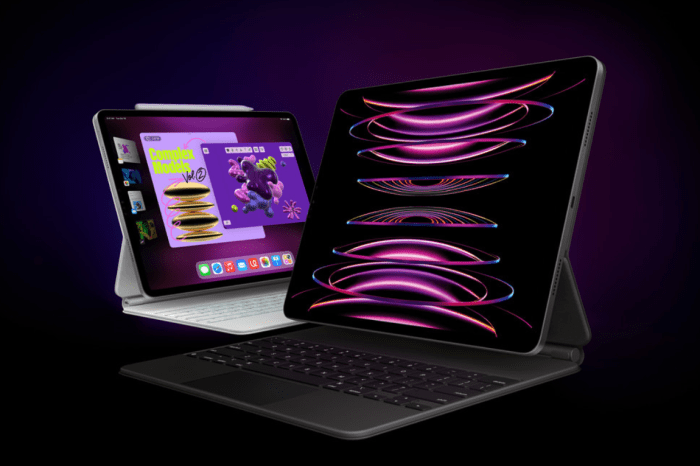
The choice between the OLED iPad Pro M4 and the iPad Pro M2 ultimately depends on your individual needs and priorities. While both offer top-tier performance and features, they cater to different user profiles.
Which iPad Pro Is Right for You?
The OLED iPad Pro M4 is a compelling option for users who prioritize a superior visual experience and are willing to pay a premium for it. Its OLED display delivers stunning color accuracy, deep blacks, and exceptional contrast, making it ideal for creative professionals, content creators, and anyone who enjoys consuming media on a high-quality screen.The iPad Pro M2, on the other hand, offers a more affordable alternative while still providing excellent performance and a solid display.
It’s a great choice for students, professionals, and casual users who value a balance between performance, features, and price.
- OLED iPad Pro M4:Ideal for creative professionals, content creators, and users who prioritize visual quality.
- iPad Pro M2:Suitable for students, professionals, and casual users who seek a balance between performance and price.
Future Outlook for the iPad Pro Lineup
Apple is expected to continue refining the iPad Pro lineup in the future, focusing on further advancements in display technology, performance, and features.
- Display:We might see even brighter and more energy-efficient OLED panels, potentially with mini-LED technology for even greater contrast and HDR capabilities.
- Performance:Apple’s M-series chips are likely to continue evolving, delivering even faster processing speeds, improved graphics performance, and enhanced AI capabilities.
- Features:Future iPad Pro models could incorporate advanced features like improved cameras, more powerful microphones, and enhanced connectivity options, such as Thunderbolt 4 and 5G.
The iPad Pro lineup is constantly evolving, and Apple’s commitment to innovation ensures that future models will offer even more impressive features and capabilities.


